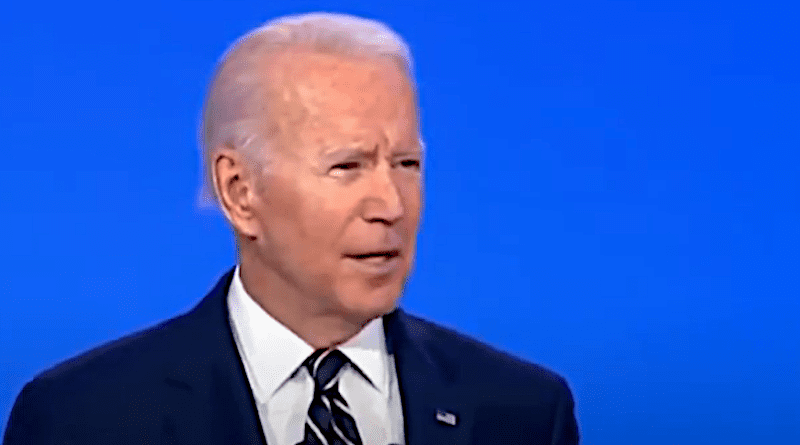President Biden On ‘Accelerating Clean Technology Innovation And Deployment’ – Speech
Thank you. Ladies and gentlemen, our overriding purpose here in Glasgow is to raise the ambitions of our commitments to keep within reach our goal of limiting global warming to 1.5 degrees Celsius.
But setting ambitious targets is only half of the equation, as you all know. We also have to concrete — have concrete plans for how we’re going to meet — how we’re going to meet those goals and decarbonize our economies to reach net-zero emissions by 2050.
To start, to state the obvious, we have to immediately scale up clean technologies that are already commercially available and cost-competitive, like wind and solar energy.
In the United States, we’ve set a goal of deploying 30 gigawatts of offshore wind by 2030, creating tens of thousands of good-paying union jobs for American workers and meeting the power needs of almost 10,000 [10 million] American homes every year.
We can do this now. We don’t have to wait.
At the same time, we recognize that our current technology alone won’t get us where we need to be. So, it must also be a decisive decade for innovation: developing, demonstrating, and commercializing new clean energy technologies by 2030 so that we can — they can be widely deployed in time to meet our 2050 net-zero goals.
Clean hydrogen, long-duration energy storage, next-generation renewables and nuclear, carbon capture, sustainable agriculture, and so much more. We need to invest in breakthroughs, and I welcome the UK’s leadership on the Glasgow Breakthrough agenda.
Innovation is the key to unlocking our future. That’s why the United States is working to quadruple funding for clean energy research and development over the next four years.
And we will lead a year of action in 2022 to advance clean technologies globally.
Over the past two days, I’ve announced several U.S. government-led initiatives to help develop and scale clean energy transmission, but we can’t achieve our goals through government action alone.
I’m looking at some of the men and women in front of me that can help accelerate and develop clean energy technologies. The United States and the World Economic Forum are launching the First Movers Coalition.
So, let me explain what the First Movers Coalition is — and I expect that you already know.
The First Movers Coalition is starting with more than two dozen of the world’s largest and most innovative companies. The coalition represents eight major sectors that comprise 30 percent of the global emissions we now are dealing with — steel, shipping, aluminum, concrete, trucking, aviation, chemicals, and direct air capture.
These companies will be critical partners in pushing for commercially viable alternatives to decarbonize the industrial — these industrial sectors and more, and while championing the U.S. innovation of good-paying jobs at the same time. And the U.S. government is going to use our enormous market power as the world’s largest buyer of goods and services — some $650 billion in acquisitions annually — to do the same. The government purchases that much.
Together, these policies, God-willing, will spur a wave of new and better products into the market, and new companies and projects that will create good-paying jobs.
So, we’re attacking the challenge from both ends. We’re sending the demand signal loud and clear, and investing in research and development to expand supply.
We don’t just want to innovate in the industrial sector, the agricultural sector also has a vital role to play. As stewards of the land, our farmers belong on the frontlines of the climate fight.
And together with the United Arab Emirates, I’m proud to announce the launch of the Agriculture Innovation Mission for Climate — AIM for Climate.
This is something we first proposed at my Leaders’ Summit on Climate. Over the last six months, we’ve worked for more than — with more than 75 partners to catalyze public and private investment in climate-smart agriculture and food system innovation.
Today, along with 75 partners, we’re going to launch a $4 billion initial investment globally. And the United States is planning to mobilize $1 billion of that $4 billion over the next five years.
And I invite all of you to join us in working to double the investment by the time we meet at COP27.
As with every aspect of the climate crisis, no one can do this alone. We need all of us working together.
I know you’re tired of hearing that said; it’s said over and over and over again. But it’s true.
And as we do, the United States will lead by example and share with the world our considerable powers of innovation.
And, as my grandfather would say, “with the grace of God and the goodwill of the neighbors and the crick not rising,” we’re going to make a lot of progress.
All kidding aside, I think there’s virtually nothing we’re unable to do, particularly when we do it together.
And, again, I want to thank all the private sector for their work. Thank you.

